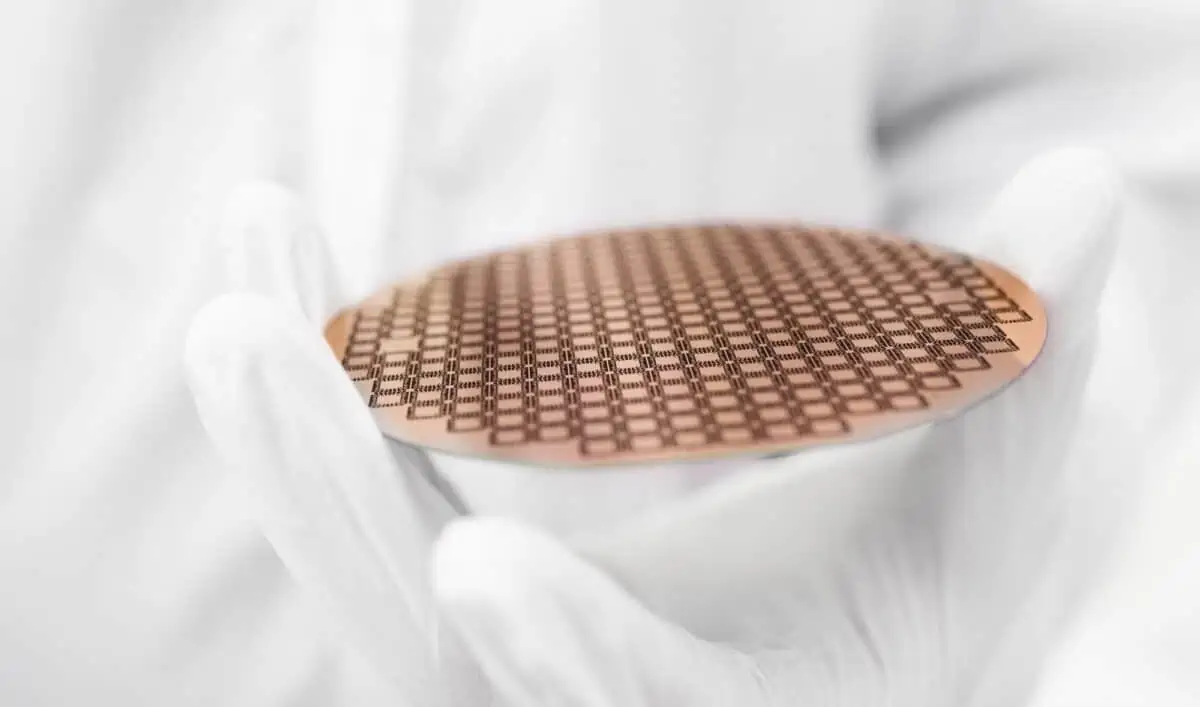Sign up for our newsletter!
Your data will be handled in compliance with our privacy policy.
Your data will be handled in compliance with our privacy policy.

Smoltek enables the production of smaller and better microelectronic components through solutions for smarter integration. The company’s disruptive technology offers a broad field of production processes for the semiconductor industry, among those CMOS-compliant devices, to meet today’s and tomorrow’s materials engineering challenges.
One example of how and where Smoltek’s technology can be implemented is in miniaturized capacitors for integration into semiconductor circuits—a critical application in the advanced packaging of high-performance processors.
As the semiconductor industry has been able to continue miniaturizing the transistors in processor chips, the chip’s performance increases, which gives us faster and increasingly powerful computers, tablets, mobile phones, etc. A consequence of this development is that the electrical voltage in the chip must be reduced, which entails an increased need for so-called decoupling capacitors near the chip. These capacitors need to be extremely thin to place these close enough to the active processor. Smoltek’s carbon nanofiber-based (CNF-MIM) capacitors can solve this particular problem.
The market for our capacitor technology is in specialized electronic components used in a variety of applications, primarily in the field of semiconductors and integrated circuits. The capacitors are specially designed to offer high capacitance values in a compact form factor.
Examples of areas of application are:
Artificial intelligence (AI), high-performance computing (HPC) and edge devices – The CNF-MIM capacitor technology addresses some of the most pressing bottlenecks in next-generation AI processors, high-performance computing (HPC), and edge computing. These advanced applications require capacitors that are not only extremely thin to be integrated directly under processor chips but also provide high capacitance density, low ESL/ESR, excellent reliability, and energy efficiency.
Artificial intelligence (AI) is the collective term for technologies that enable computers to perform tasks that normally require human intelligence – such as recognizing images, understanding language, playing games or making decisions. It is based on algorithms, mathematical models and (now mainly) Machine Learning (ML) and Deep Learning (DL), where neural networks are trained on large data sets.
Consumer electronics – Smartphones, tablets and portable devices where the capacitors are used in the application processor, which place high demands on the combination of high performance in a small form factor. With our technology for ultra-thin capacitors, we can become a leading technology supplier in this segment, as we can meet those requirements. It enables, for example, our capacitors to be placed closer to the application processor compared to competing technologies, which is very important for, like for example, mobile phone manufacturers as it increases system (AP/SoC – System on Chip1) performance.
The automotive industry – Our capacitors are suitable for various electrical systems in the automotive industry where technology has become more advanced, with extensive software implementation and many complex safety systems. This means that there are strict requirements for stable voltage levels and reliable function of important components, which are challenges our capacitor technology can meet.
The aerospace and defense industry – Technology developments require high-performance capacitors to meet the strict specifications found in radar systems, communications equipment, and other avionics.
Radio frequency (RF) – Our technology can be used in so-called RF circuits where there are high requirements for a very small form factor. In RF, our technology can be used to control impedance (electrical resistance to alternating current) and improve the performance of wireless communication devices such as mobile phones and Wi-Fi routers.
Industry and manufacturing – In industrial automation and control systems, our capacitor technology can be used to ensure the high demands placed on stable and accurate voltage levels, contributing to the reliability of manufacturing processes.
In summary, our technology is driven by the increasing demand for miniaturized, high-performance electronic devices in a variety of industries. As the development of semiconductor technology continues and the need for smaller and more efficient components increases, we expect the market for our capacitor technology to expand.